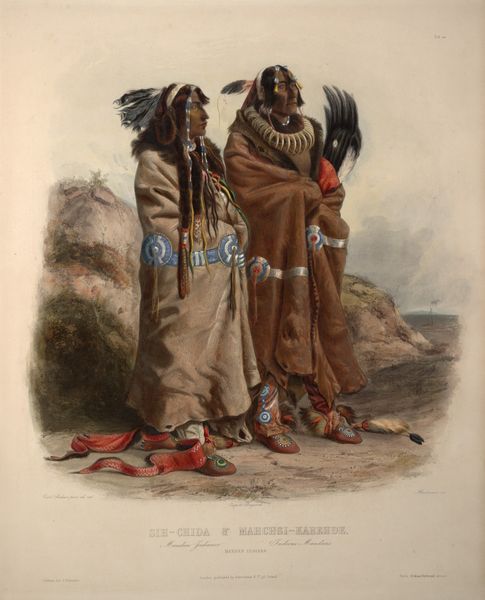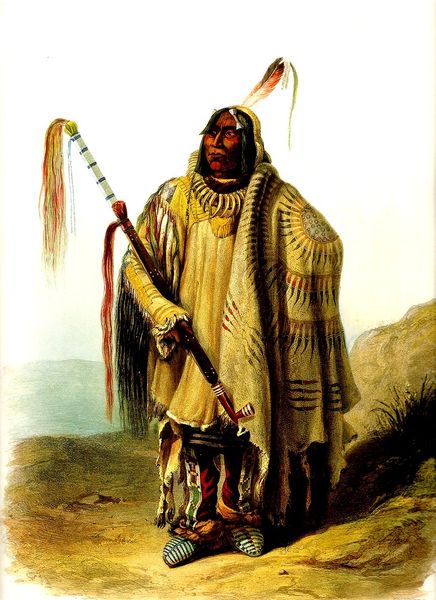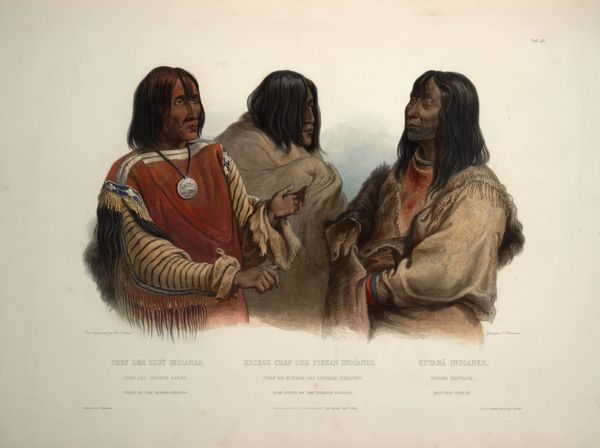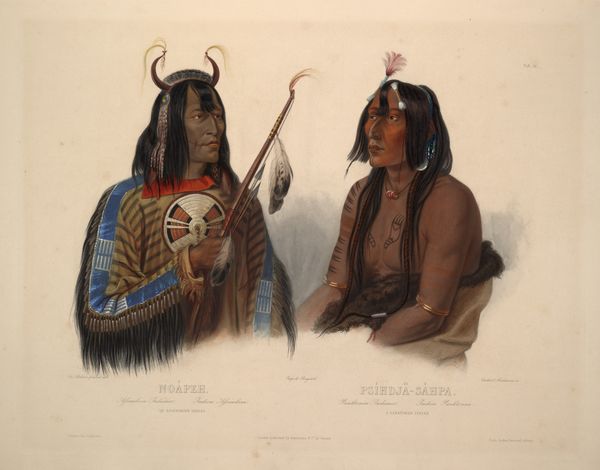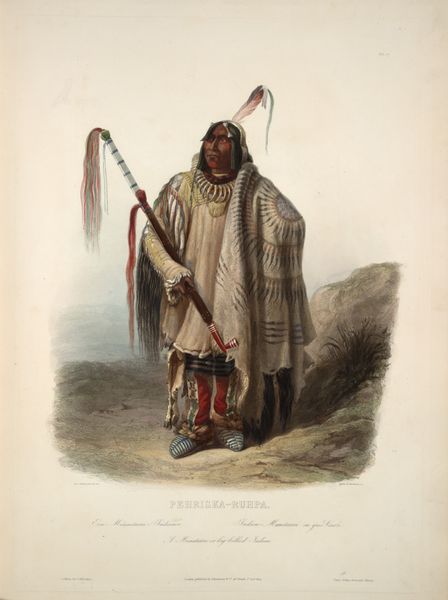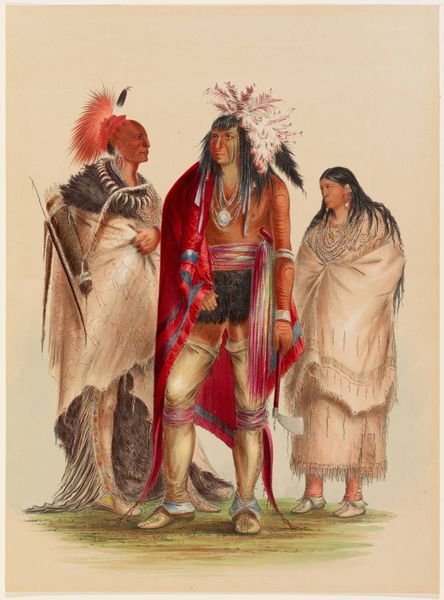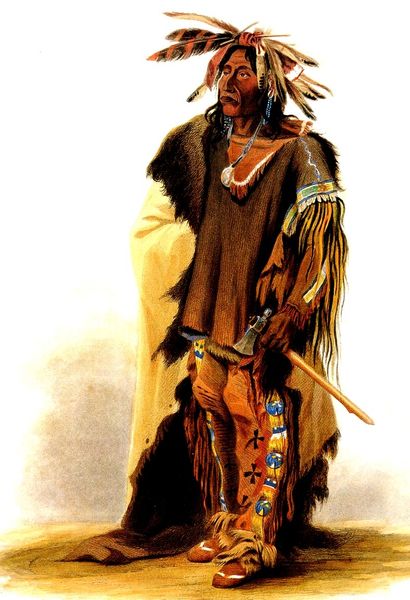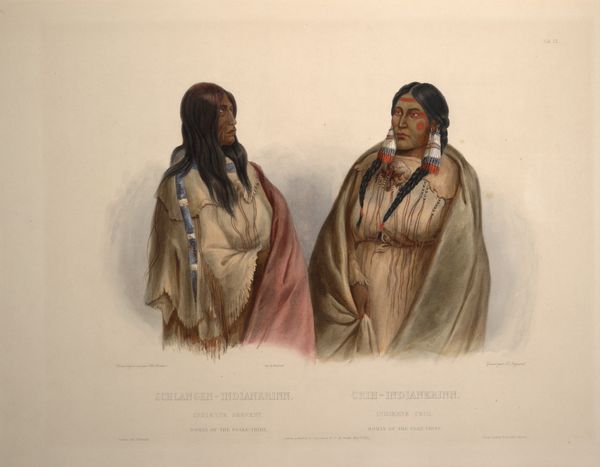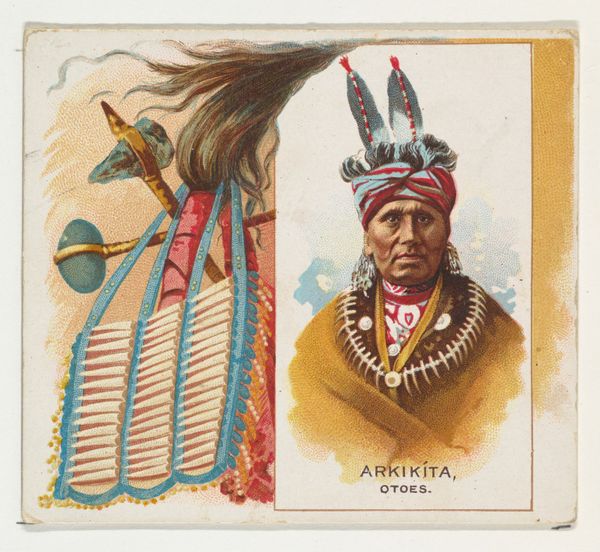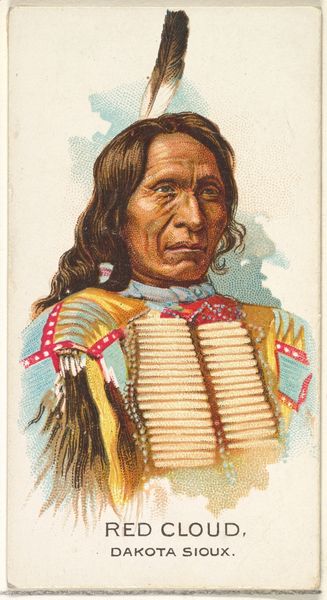
Sih-Chida and Mahchsi-Karehde, Mandan Indians, plate 20 from Volume 2 of 'Travels in the Interior of North America' 1844
0:00
0:00
karlbodmer
Private Collection
lithograph, print
#
portrait
#
lithograph
# print
Copyright: Public domain
Editor: This print, titled "Sih-Chida and Mahchsi-Karehde, Mandan Indians" by Karl Bodmer, created around 1844, portrays two imposing figures. Their elaborate garments and poised stances suggest significance, but there’s also something… melancholic in their expressions, like they're posing for a photograph knowing that they, and their ways, are on the brink of vanishing. How do we understand the power dynamics in a portrait like this? Curator: It's critical to remember that these images were created within a specific historical and social framework. Artists like Bodmer played a complex role in documenting Indigenous cultures while simultaneously contributing to a colonial narrative. What looks like objective observation is inevitably shaped by the worldview of the artist and the expectations of the European audience. Consider who commissioned this work, and where it was ultimately displayed and consumed. Editor: So, is it less about accuracy and more about the intended impact on viewers back in Europe? Curator: Precisely. The romanticized details, the noble bearing of the subjects – these elements reinforce certain stereotypes, fitting into pre-existing European understandings and biases about Indigenous peoples. We have to ask ourselves, what function did these portraits serve in justifying westward expansion and dispossession? Editor: So, viewing this as history painting places a burden on us to be hyperaware of not only what is represented but the way these men and their culture were positioned in the imagination of the viewer at that time. It's a document but not a neutral one. Curator: Exactly. Understanding the politics of imagery is paramount. What seems like a straightforward representation of two individuals becomes a complex statement about cultural encounter, power, and the role of art in shaping historical narratives. Editor: Thank you. That provides a much deeper layer of complexity for thinking about these images and how they shaped public perceptions.
Comments
No comments
Be the first to comment and join the conversation on the ultimate creative platform.
